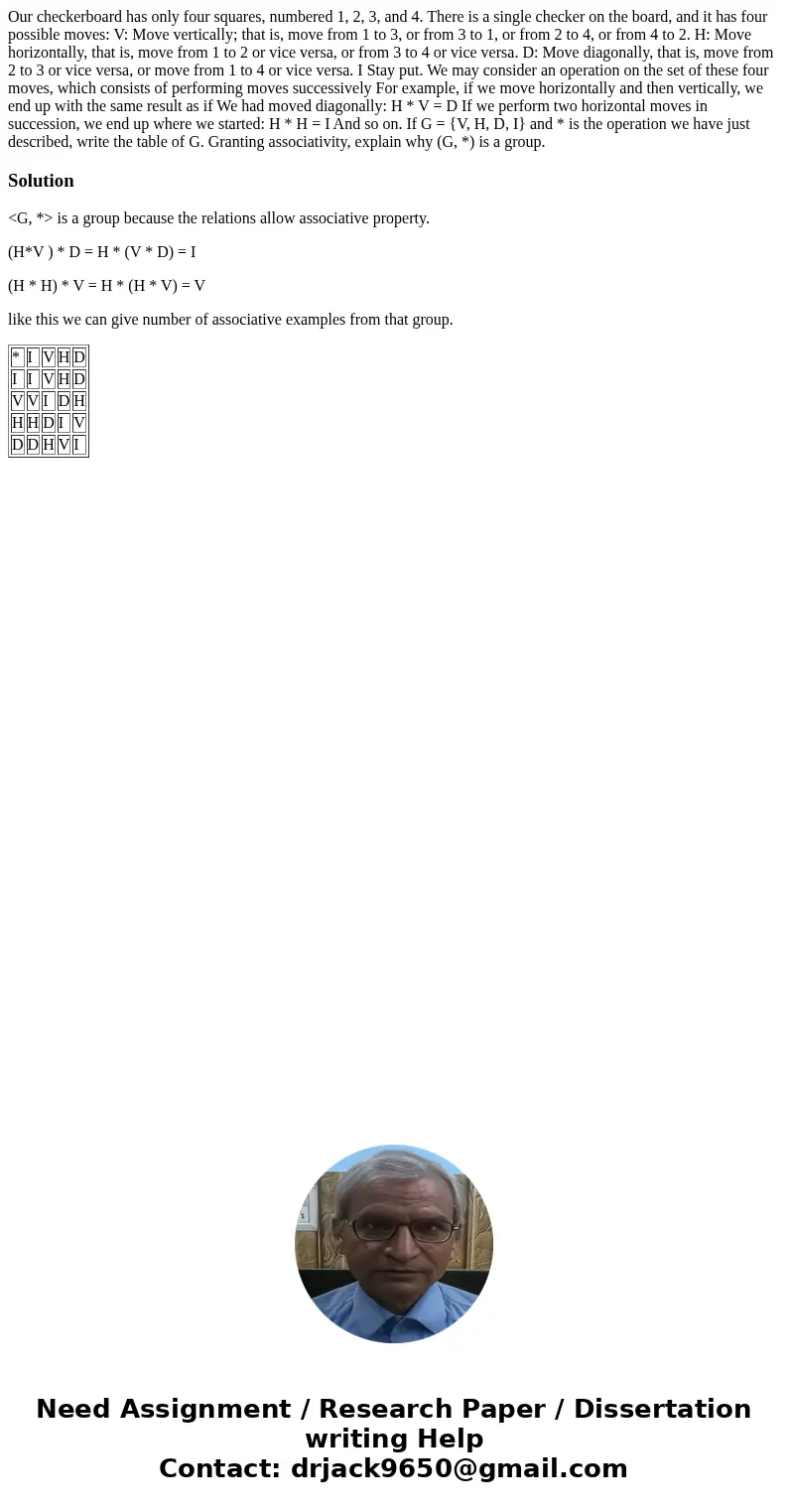Our checkerboard has only four squares numbered 1 2 3 and 4
Our checkerboard has only four squares, numbered 1, 2, 3, and 4. There is a single checker on the board, and it has four possible moves: V: Move vertically; that is, move from 1 to 3, or from 3 to 1, or from 2 to 4, or from 4 to 2. H: Move horizontally, that is, move from 1 to 2 or vice versa, or from 3 to 4 or vice versa. D: Move diagonally, that is, move from 2 to 3 or vice versa, or move from 1 to 4 or vice versa. I Stay put. We may consider an operation on the set of these four moves, which consists of performing moves successively For example, if we move horizontally and then vertically, we end up with the same result as if We had moved diagonally: H * V = D If we perform two horizontal moves in succession, we end up where we started: H * H = I And so on. If G = {V, H, D, I} and * is the operation we have just described, write the table of G. Granting associativity, explain why (G, *) is a group.

Solution
<G, *> is a group because the relations allow associative property.
(H*V ) * D = H * (V * D) = I
(H * H) * V = H * (H * V) = V
like this we can give number of associative examples from that group.
| * | I | V | H | D |
| I | I | V | H | D |
| V | V | I | D | H |
| H | H | D | I | V |
| D | D | H | V | I |

 Homework Sourse
Homework Sourse